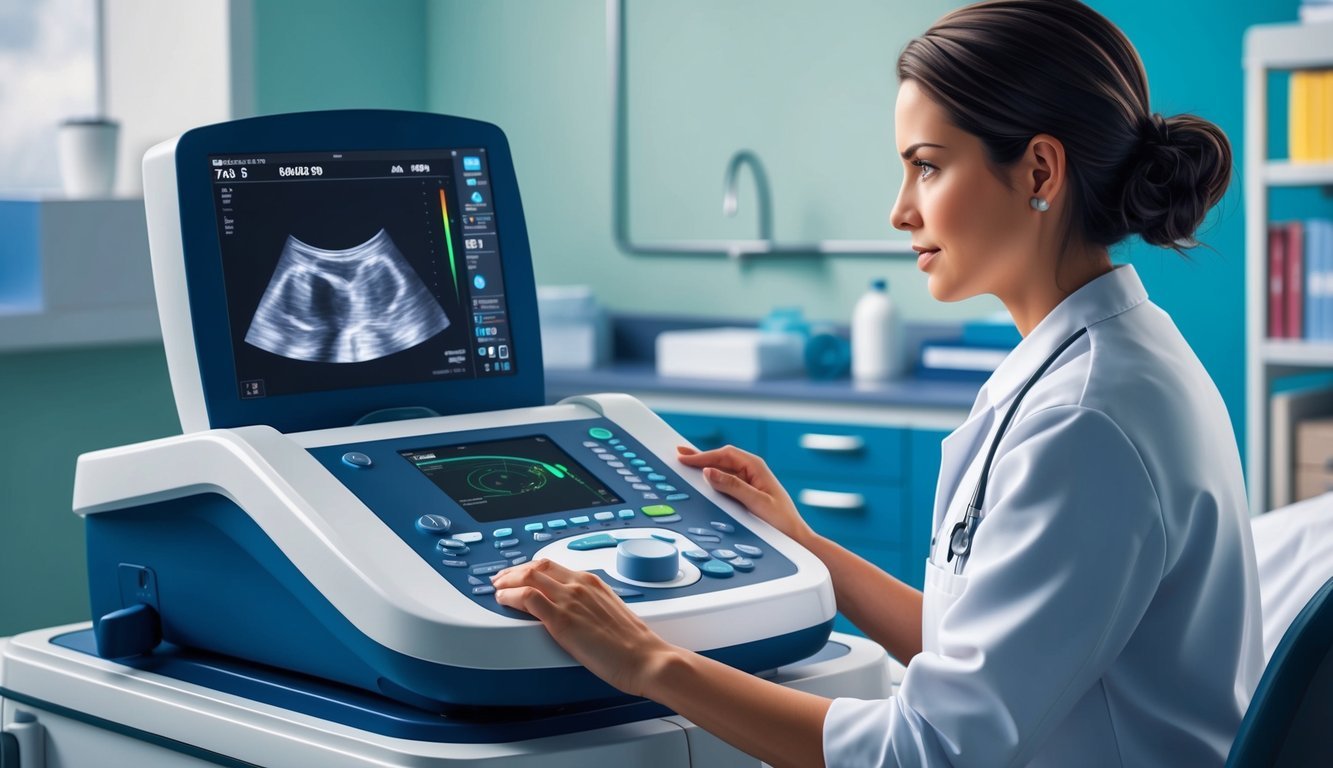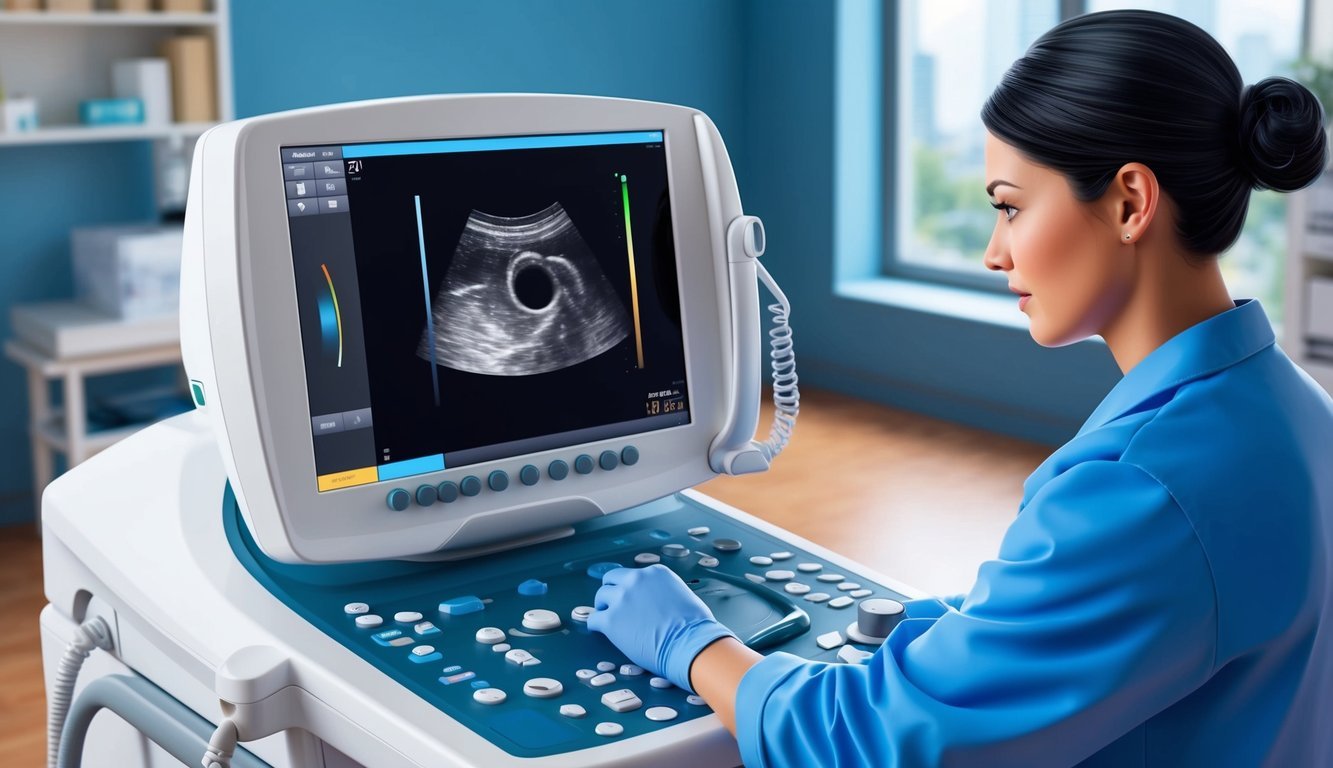Becoming an ultrasound technician, also known as a sonographer, offers a rewarding career path in the healthcare industry. As an ultrasound tech, you will play a crucial role in diagnostic medical sonography, using advanced imaging technology to assist in patient care and diagnosis. With a growing demand for skilled professionals in this field, now is an excellent time to explore what it takes to enter this profession.
In this blog post, you will discover the educational requirements, certification processes, and potential career paths available to ultrasound technicians.
The role involves performing ultrasound examinations, documenting findings, and collaborating with healthcare teams to ensure patients receive the best care.
The career not only provides competitive salaries but also opportunities for specialization in areas such as obstetrics, cardiology, and vascular technology.
For anyone interested in healthcare and technology, becoming an ultrasound technician can be a fulfilling choice that combines both.
Education and Certification Pathways
To become an ultrasound technician, you need to navigate through specific educational and certification requirements.
This process includes meeting pre-degree prerequisites, completing sonography degree programs, exploring relevant specializations, and obtaining professional certification.
Pre-degree Requirements
Before pursuing a career as an ultrasound technician, you must obtain a high school diploma or an equivalent GED.
This foundational education is crucial as it sets the groundwork for further studies.
In many instances, coursework in biology, chemistry, and health sciences is beneficial.
Some programs also recommend having a background in mathematics and basic computer skills.
Sonography Degree Programs
Once you meet the pre-degree requirements, you can enroll in a sonography degree program.
Most programs offer associate degrees, which typically take about two years to complete.
Bachelor’s degrees are also available and take around four years.
Accreditation is essential when selecting a program.
Look for programs accredited by the Commission on Accreditation of Allied Health Education Programs (CAAHEP).
This ensures the program meets high educational standards.
Courses in these programs will cover anatomy, physiology, and ultrasound physics.
You will also gain hands-on training with ultrasound equipment, which is crucial for your professional development.
Specializations in Sonography
After completing your degree, consider pursuing specializations to enhance your career opportunities.
Common specializations include:
- Registered Diagnostic Medical Sonographer (RDMS)
- Registered Diagnostic Cardiac Sonographer (RDCS)
- Registered Vascular Technologist (RVT)
- Registered Musculoskeletal Sonographer (RMSKS)
Each specialization requires additional training and certification, which can make you more competitive in the job market.
Focusing on a specialization can lead to higher earning potential and greater job satisfaction.
Professional Certification
Certification is a critical step in establishing your credibility as an ultrasound technician.
Two key organizations offering certification are the American Registry for Diagnostic Medical Sonography (ARDMS) and the American Registry of Radiologic Technologists (ARRT).
To become certified, you generally need to pass a credentialing exam specific to your area of specialization.
This may include the ARDMS certification exams for RDMS, RDCS, RVT, or RMSKS.
Consider the Cardiovascular Credentialing International (CCI) for those interested in cardiovascular sonography.
Remember that maintaining certification often requires continuing education credits, so be prepared to stay current in your field.
Core Skills and Knowledge

As an ultrasound technician, possessing specific skills and knowledge is crucial for effective practice.
These core competencies include a deep understanding of sonography principles, anatomy and physiology, and essential patient care and communication skills.
Understanding of Sonography Principles
A solid grasp of sonography principles is fundamental.
You utilize high-frequency sound waves to create images of internal structures.
Understanding how sound travels through different tissues helps in adjusting parameters for optimal image quality.
Key concepts include:
- Acoustic Properties: Comprehend how different tissues reflect sound differently.
- Scanning Techniques: Master techniques like transabdominal ultrasound, transvaginal ultrasound, and doppler imaging.
- Medical Terminology: Familiarity with relevant terminology enhances communication with medical professionals.
For more detailed guidelines on these principles, visit Ultrasound Principles.
Anatomy and Physiology
A comprehensive understanding of human anatomy and physiology is vital.
Knowing the structure and function of organs helps you identify abnormalities during scans.
You focus on systems such as the cardiovascular, digestive, and reproductive systems.
Important aspects include:
- Anatomical Structures: Familiarize yourself with organs, their locations, and functions.
- Physiological Functions: Understand how organs work together, which aids in identifying potential issues.
- Relevant Pathophysiology: Knowing how diseases affect anatomy supports accurate diagnostics.
For more information, refer to Medical Anatomy Resources.
Patient Care and Communication
Excellent patient care and communication skills are essential in this role.
Establishing trust can greatly enhance patient comfort and cooperation during procedures.
Focus on these areas:
- Empathy and Compassion: Understand patient concerns and provide appropriate reassurances.
- Clear Communication: Use simple language to explain procedures and answer questions.
- Patient Preparation: Ensure patients know how to prepare for their ultrasound, which could involve dietary restrictions or hydration guidelines.
To enhance your communication skills, explore resources on Patient Care Techniques.
Clinical Training and Practical Experience

Clinical training is essential in your journey to becoming an ultrasound technician.
This phase provides critical exposure to diagnostic imaging processes, emphasizing hands-on practice with ultrasound equipment under the supervision of experienced healthcare professionals.
Internships and Externships
Internships and externships are vital components of your education.
These programs allow you to apply theoretical knowledge gained in classrooms to real-world scenarios.
During an internship, you work in a clinical setting, gaining experience with ultrasound machines and developing technical skills.
Externships typically occur in dedicated medical facilities where you can observe and assist with various sonography procedures.
Engaging with patients and healthcare teams enhances your understanding of patient care and professional interactions.
Completing a minimum number of clinical hours is often required, and this experience helps you build a strong foundation in medical sonography.
Hands-On Ultrasound Techniques
Hands-on training involves practical lessons on operating various imaging equipment.
You will learn about the mechanics of ultrasound machines, including how to adjust settings for optimal imaging quality.
Your education will cover various sonography procedures, such as abdominal, obstetric, and vascular sonography.
Each type of imaging requires different techniques, and understanding these nuances is critical for accurate diagnostics.
Practicing these skills in a clinical setting allows you to refine your techniques and develop confidence.
Gaining Specialized Experience
Specialization in areas like vascular sonography can enhance your career opportunities.
Through targeted clinical training, you will learn advanced imaging techniques and gain insights into specific conditions.
Working alongside healthcare professionals in specialized settings, such as hospitals or imaging centers, helps you understand the demands of different healthcare environments.
Forming connections with practitioners during your training can also lead to mentorship opportunities and job offers after graduation.
This specialized experience not only improves your skill set but increases your marketability in the job market.
Professional Development and Advancement

To excel as an ultrasound technician, focus on continuing education, explore advancement opportunities, and stay updated with emerging technologies.
These aspects not only enhance your skills but also significantly impact your career trajectory.
Continuing Education
Continuing education is crucial for ultrasound technicians to maintain licensure and keep pace with advancements in the field.
Many states require specific continuing education (CE) credits to renew certifications.
You should look for accredited programs that offer CE courses relevant to your specialty.
CME credits can often be earned through workshops, webinars, and online courses.
Engaging in lifelong learning ensures you enhance your technical expertise and improve patient care.
According to the American Registry for Diagnostic Medical Sonography, staying current can directly impact your job prospects and earning potential.
Advancement Opportunities
Advancing your career as an ultrasound technician can lead to specialized roles, higher salaries, and leadership positions.
Options include becoming a registered sonographer in specific areas such as echocardiography or vascular sonography.
Pursuing additional certifications enhances your qualifications and marketability.
Consider roles in education or management if you’re drawn to leadership.
Some technicians progress into supervisory or quality assurance positions, overseeing technical staff and operations.
Also, certain employers offer tuition reimbursement for advanced studies, which can help you transition into more specialized roles.
Emerging Technologies and Research
Staying abreast of emerging technologies and research is essential for your professional development.
Innovations, such as 3D and 4D imaging and contrast-enhanced ultrasound, are transforming patient diagnostics.
Engaging in research can enhance your knowledge and provide networking opportunities with professionals in the field.
Attending conferences and participating in workshops can significantly broaden your understanding of these technologies.
Additionally, subscribing to reputable journals or online platforms can keep you informed about the latest studies, techniques, and industry standards.
Your willingness to adapt to change will position you as a valuable asset in any healthcare setting.
Employment Landscape

The employment landscape for ultrasound technicians is characterized by diverse job settings, strong demand, and opportunities to enhance skills.
Understanding these factors can greatly influence your career path.
Job Settings and Environments
As an ultrasound technician, you will find job opportunities in various settings.
Common environments include:
- Hospitals: These facilities often have dedicated imaging departments where sonographers work closely with physicians.
- Outpatient Care Centers: These centers are becoming more prevalent, focusing on non-emergency procedures, allowing for a higher volume of patients.
- Physician Offices: Smaller practices may offer ultrasound services, especially in specialties like obstetrics and cardiology.
Each setting has unique dynamics and patient interactions, so you can choose an environment that aligns with your preferences.
Demand and Job Growth
The demand for ultrasound technicians is expected to grow substantially.
According to the Bureau of Labor Statistics, the job outlook projects a growth rate of 12% from 2019 to 2029, significantly faster than the average for all occupations.
Factors driving growth include:
- Increased reliance on ultrasound for diagnosing various medical conditions
- Expansion of outpatient care facilities
- The aging population requiring more diagnostic services
These elements create a vibrant job market in the field.
Diversifying Your Skillset
To remain competitive in the ultrasound field, you should consider diversifying your skillset.
Specialized training can open doors to advanced roles and enhance your employability.
Key areas for skill development include:
- Vascular Sonography: Focuses on imaging vascular structures and blood flow, crucial for cardiovascular health.
- Obstetric and Gynecologic Sonography: Specialization in women’s health and fetal imaging.
- Cardiac Sonography: Involves imaging the heart, essential in diagnosing cardiovascular conditions.
Investing in certifications and additional training can significantly broaden your career prospects in this evolving field.

